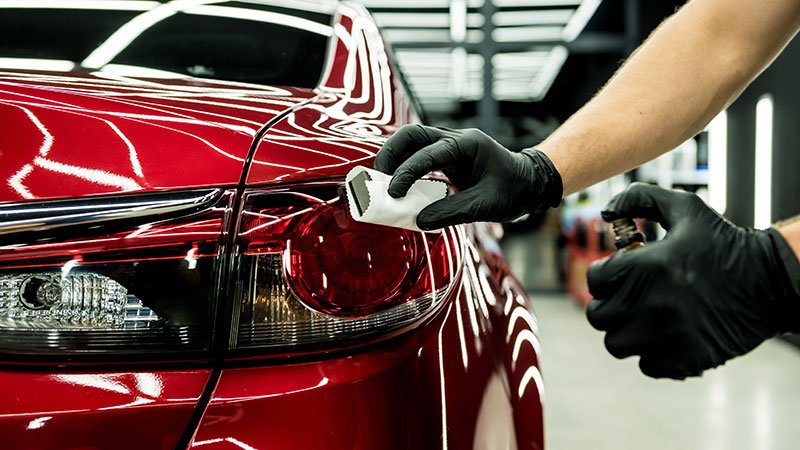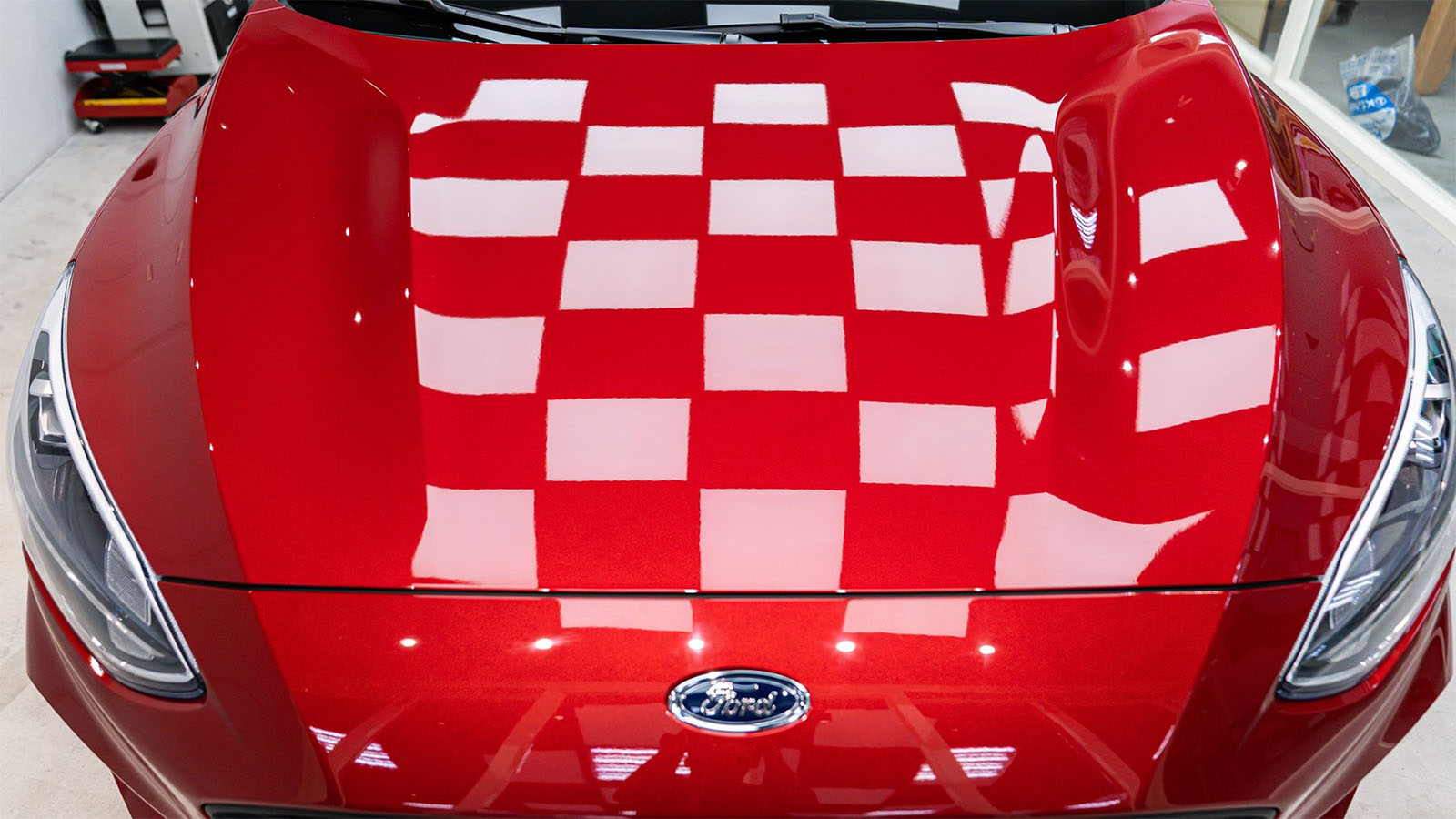Ceramic Coatings San Jose: Enhance and Safeguard Your Car's Finish
Ceramic Coatings San Jose: Enhance and Safeguard Your Car's Finish
Blog Article
Introducing the Science Behind Ceramic Coatings: Just How Does It Work and Why Is It Superior to Standard Alternatives?
Ceramic finishings have been gaining appeal in various sectors for their phenomenal performance and durability. The scientific research behind these finishings exceeds mere surface security, delving into the complex chemistry that makes them stand apart from traditional options (ceramic coatings san jose). Understanding just how ceramic coverings job and why they outperform standard options is vital for those looking for to enhance the longevity and durability of their products. So, just what establishes ceramic finishes apart, and exactly how do they achieve such exceptional results?
The Chemistry of Ceramic Coatings
In comprehending ceramic finishings, delving right into the complex chemistry behind their structure is important for realizing their capability and toughness. Ceramic coverings are largely made up of silicon dioxide (SiO2), which forms a solid and protective layer when used to various surfaces. This chemical structure gives outstanding resistance to heat, chemicals, and deterioration, making ceramic coverings extremely searched for for a vast range of applications.
The chemistry behind ceramic layers involves the development of covalent bonds in between silicon and oxygen atoms, creating a stiff network that improves the finish's sturdiness and longevity. Additionally, the visibility of other elements such as titanium, zirconium, and aluminum additional enhances the finishing's buildings, offering enhanced firmness and bond to surface areas.
Understanding the chemical composition of ceramic coverings permits the personalization of solutions to match particular requirements, whether it be for vehicle, commercial, or household purposes. By taking advantage of the power of chemistry, ceramic finishes remain to lead the way for superior protection and performance in various industries.
Benefits of Ceramic Coatings

As a result, ceramic finishes make cleansing and maintaining surfaces much easier and less taxing. Overall, the multitude of advantages used by ceramic finishings make them a premium option compared to standard layer approaches.
How Ceramic Coatings Bond
Ceramic layers bond to surfaces via a procedure that entails molecular bond and chemical interactions. When a ceramic covering is applied to a surface area, it creates a solid bond by chemically adhering to the surface at a molecular degree.
Additionally, the chemical interactions between the ceramic finishing and the surface further improve the bond. ceramic coatings san jose. These interactions permit the ceramic finishing to develop a smooth and continuous layer on the surface area, giving excellent protection and durability. Unlike traditional coatings that may remain on the surface without fully bonding, ceramic finishes create a long-term bond that is resistant to chemicals, UV rays, and harsh ecological problems

Essentially, the bonding mechanism of ceramic finishes guarantees a effective and long-lasting protective layer that outperforms traditional finish choices. This superior bond contributes to the longevity, scrape resistance, and durability of ceramic layers, making them a favored option for various applications.
Longevity of Ceramic Coatings
The phenomenal durability of ceramic layers originates from their durable molecular adhesion and chemical interactions with surfaces, making certain a sturdy protective layer that goes beyond conventional coating alternatives. When used, ceramic coverings create a strong bond with the substratum, developing a resistant obstacle against various environmental stress factors such as UV radiation, chemicals, and abrasions. This bond is so protected that it can stand up to the rigors of daily usage without degrading or weakening swiftly.
Unlike traditional finishes that might break down gradually, ceramic finishes maintain their integrity for an extended period, supplying durable defense for the underlying surface area. The solid you could look here molecular structure of ceramic coatings stands up to chipping, fading, and peeling, ensuring that the surface stays secured and cosmetically pleasing for years to find. This longevity not just lowers the demand for constant reapplications but also conserves time and cash in the future. On the whole, the extraordinary sturdiness of ceramic layers makes them a superior selection for shielding a vast array of surface areas in different applications.
Ceramic Coatings Vs. Typical Alternatives
In comparison to conventional finish methods, ceramic finishings use a distinct mix of resilience and protective capabilities that set them apart in different surface security applications. Standard alternatives such as wax or sealants provide a short-term layer of protection that can disappear rapidly, needing regular reapplication. On the other hand, ceramic finishes form a strong bond with the surface area, creating a semi-permanent or irreversible barrier that is extremely resistant to abrasion, chemicals, UV rays, and extreme temperature levels.
Additionally, ceramic finishes use remarkable hydrophobic properties contrasted to standard coverings. The hydrophobic nature of ceramic finishings creates water to grain up and roll off the surface area, lugging dust and pollutants with it. This self-cleaning impact helps to keep the surface's tidiness and gloss for extended periods, decreasing the demand for constant maintenance.
Additionally, ceramic coatings have a thicker layer compared to conventional alternatives, supplying improved scrape resistance and security against minor influences. This durability makes certain lasting efficiency and assists preserve the visual charm of the dealt with surface for an extensive period.
Conclusion
To conclude, the scientific research behind ceramic coverings depends on their chemical make-up and bonding properties, making them remarkable to conventional alternatives. The benefits of ceramic layers include raised resilience and defense for surfaces. By comprehending just how ceramic coverings job and their benefits over conventional options, one can make enlightened decisions when thinking about coating choices for different applications.
Unlike traditional coatings that may rest on the surface area without fully bonding, ceramic finishings develop a permanent bond that is resistant to chemicals, UV rays, and harsh environmental problems.
The exceptional durability of ceramic finishes stems from their durable molecular adhesion and chemical interactions with surface areas, ensuring a resilient protective layer that goes beyond standard layer alternatives.Unlike conventional finishings that might break down over time, ceramic coverings preserve their integrity for an extended period, providing lasting protection for the underlying navigate here surface.In comparison to traditional finish their website approaches, ceramic layers supply a distinct mix of durability and protective capacities that establish them apart in numerous surface area protection applications. By comprehending how ceramic finishings job and their benefits over standard alternatives, one can make educated decisions when considering covering alternatives for numerous applications.
Report this page